Entertainment
An Inspirational story of ‘Artist, Engineer and Producer Michael M Jeni’

Journalist- Hello !!! How are you ?
“Hello, I’m doing well! Thank you for having me!”
Journalist-Please, Introduce yourself? “Where should I start?
I’m Michael M Jeni, a “AfroPop/AfroBeat artist based in Iowa born in Idaho, umm my favorite color is red, and music is my passion. I’m always nervous doing these interviews.”
Journalist-What got you into music and made you realize that it was your chosen path?
“Music has always been apart of my life since birth. I start and end my day with music everyday. My love for music came at a the age of 3 if I’m correct. My parents used to tell me stories that I would imitate dance moves, and singing from artists like Michael Jackson, Koffi Olomide, and that’s where it all started. Even going through elementary to high school I played the violin, I was in honors choir, and was able to learn music theory which helps with everything I do music wise today. Fast forward to 2015 I lost my mother to cancer, I had to find different ways to channel emotions that I was feeling so I turned to writing music, and here we are today. Overtime hearing peoples reactions about my music, and how it helped them through a situation, or how it inspires them, that’s what let me know I’ve chosen the right path, no matter how long it takes. Music is my outlet to express myself and things I go through, if I didn’t have music, I honestly wouldn’t be here and that’s a fact”
Journalist-Tell us about your new single. And what’s the story behind it?
“My latest single “Tokooos II” (Good Vibes II) was inspired by one of my idols Fally Ipupa, he’s an African artist from Congo! His music amongst others like Koffi Olomide, Chris Brown, Michael Jackson, Anita Baker, Eric Bellinger, and others inspires the music I make today. This particular single gives a summer vibe, it’s uptempo, groovy, makes you want to dance a bit. This song tells a story about wanting to vibe with someone again that you know or have history with, that one person that makes you feel a certain way. You know? Someone that you truly vibe with. When you hear this song it should put a smile on your face”
Journalist-What makes your music unique?
“My style of music is different, as mentioned before, my style is “AfroPop/AfroBeat, in Iowa, that is rare, my sound is rare and different, which I don’t mind, it’s me. I have to do what’s authentic and raw, and my African Rwandan heritage is me, minus the politics and issues in Rwanda. Growing up I was afraid to let my peers and others know was African, I was bullied because of it, today I have a greater appreciation and understanding of my culture.
Journalist- What advice would you give to aspiring musicians?
“Trust yourself and the process. Always remain humble, and be patient. Timing is everything, don’t rush your art for anybody, money is NEVER the end goal. You’ll feel every emotion doing this, you’ll have days where you get no sleep, you’ll have days where you cry, your angry, happy, you’ll even have days where your alone, you feel like no one understands you or what your trying to accomplish, but it’s all a balance, always remember there’s a purpose why your doing music, more importantly, never give up, finish the race strong.”
Journalist-And any particular artist/band you would like to collaborate with in the future?
One dream collaboration would be with Fally Ipupa, his artistry, and how he approaches his craft is unique! He practices the method of pushing yourself beyond your limits and challenging yourself. That’s inspirational.
Journalist-Any upcoming projects?
“Right now we’re about to begin a new era. In a Couple months the music video for “Tokooos II” (Good Vibes II) will be released and directly after that, the “King” Era starts…. “King” is the title of my new EP and the first single from my new EP is titled “C’est Moi” (It’s me). I named my EP “King” because of what my middle and last name means, no cocky shit just to be clear, but definitely expect my new single very soon!
Journalist-How our Readers contact with you?
“Definetly follow me on all social media platforms even TIKTOK @michaelmjeni
Entertainment
Dave Bishop and the Global Rise of Ghana Through Tourism
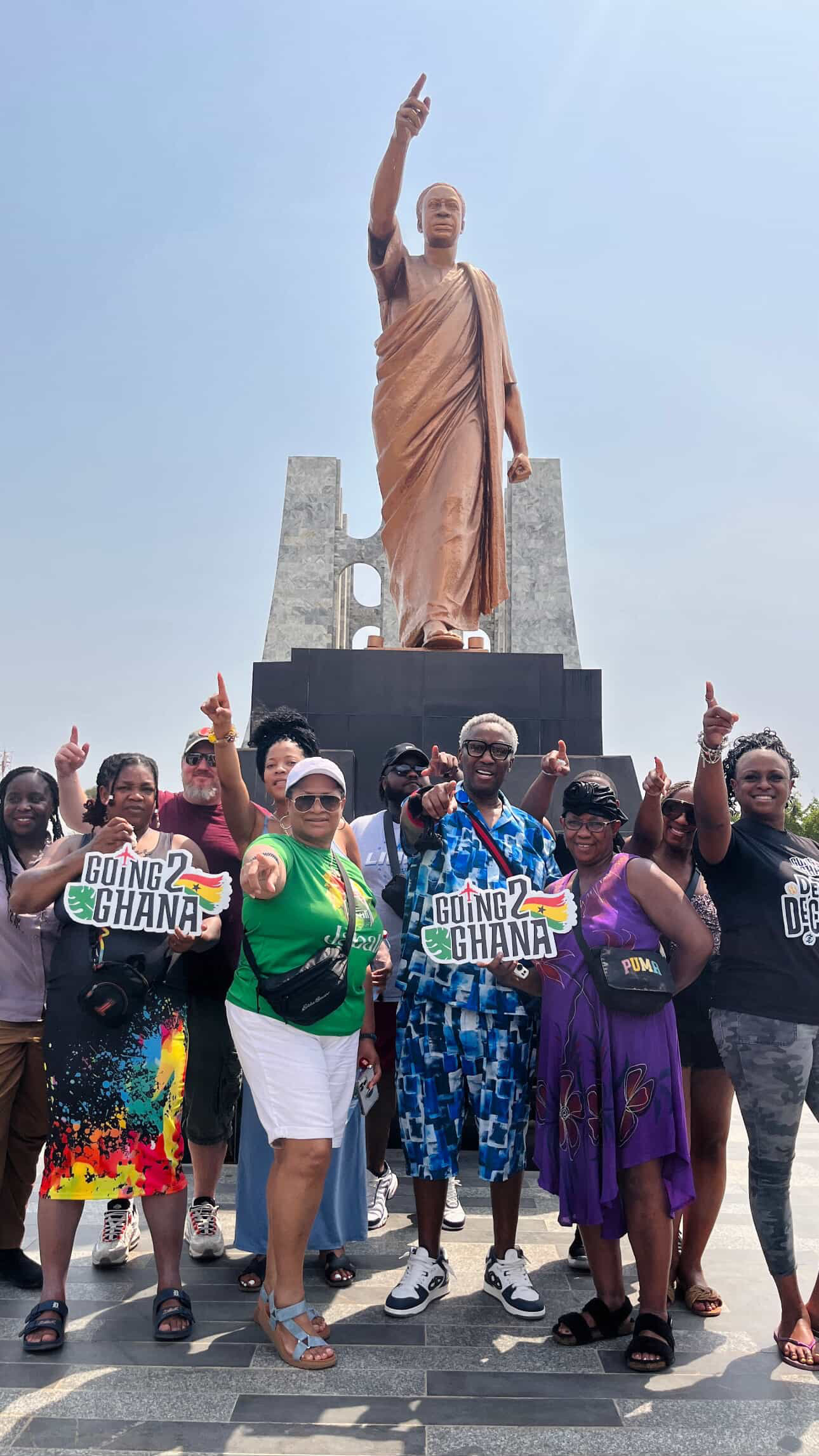
For Dave Bishop, tourism is not just about travel. It is about changing narratives, building cultural bridges, and creating lasting economic and human impact. Through his award winning company Going2Ghana, Dave is helping reshape how the world sees Ghana and Africa at large by offering authentic, educational, and life changing travel experiences rooted in culture, history, and connection.
His work in tourism has become one of the most powerful extensions of his lifelong mission of community development, service, and global collaboration.
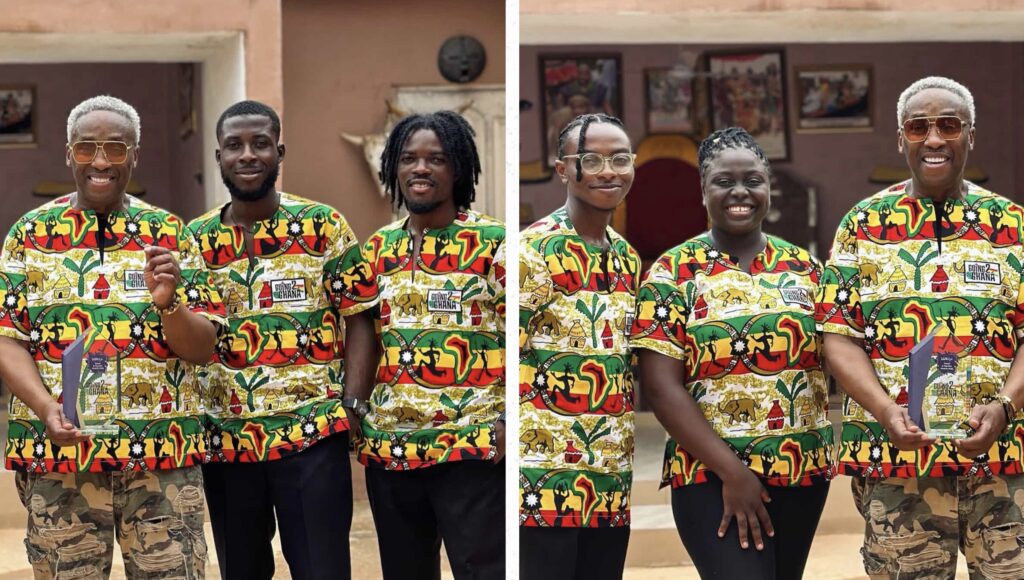
Going2Ghana and the Mission to Redefine African Travel
Operating out of Accra, Ghana, Going2Ghana is built on a clear purpose: to promote the uniqueness of Ghanaian culture while delivering travel experiences that enrich the lives of visitors from around the world.
For centuries, Africa has been home to rich cultures, breathtaking landscapes, extraordinary food, and remarkable people. Yet decades of negative portrayal have created misconceptions. Going2Ghana exists to change that story by giving travelers a real, authentic experience of Ghana, not a filtered version.
Through carefully designed travel programs, clients explore Ghana’s cultural heritage, history, and living traditions while building meaningful connections with the people and communities they encounter.
Ghana as a Living Classroom of History and Culture
Ghana stands as one of the most peaceful and visited countries on the African continent, offering powerful history alongside natural beauty. Visitors experience cultural landmarks such as Kwame Nkrumah Memorial Park, which tells the story of Ghana’s independence, and Cape Coast Castle with its Door of No Return, offering a deeply moving look at the Transatlantic Slave Trade.
Beyond history, travelers explore the natural beauty of the Volta Region, home to Wli Waterfalls, the highest waterfall in West Africa, and Volta Lake, the largest manmade lake in the world. Wildlife experiences at Mole National Park introduce visitors to elephants, antelopes, baboons, and a wide range of bird species within thousands of kilometers of open savannah.
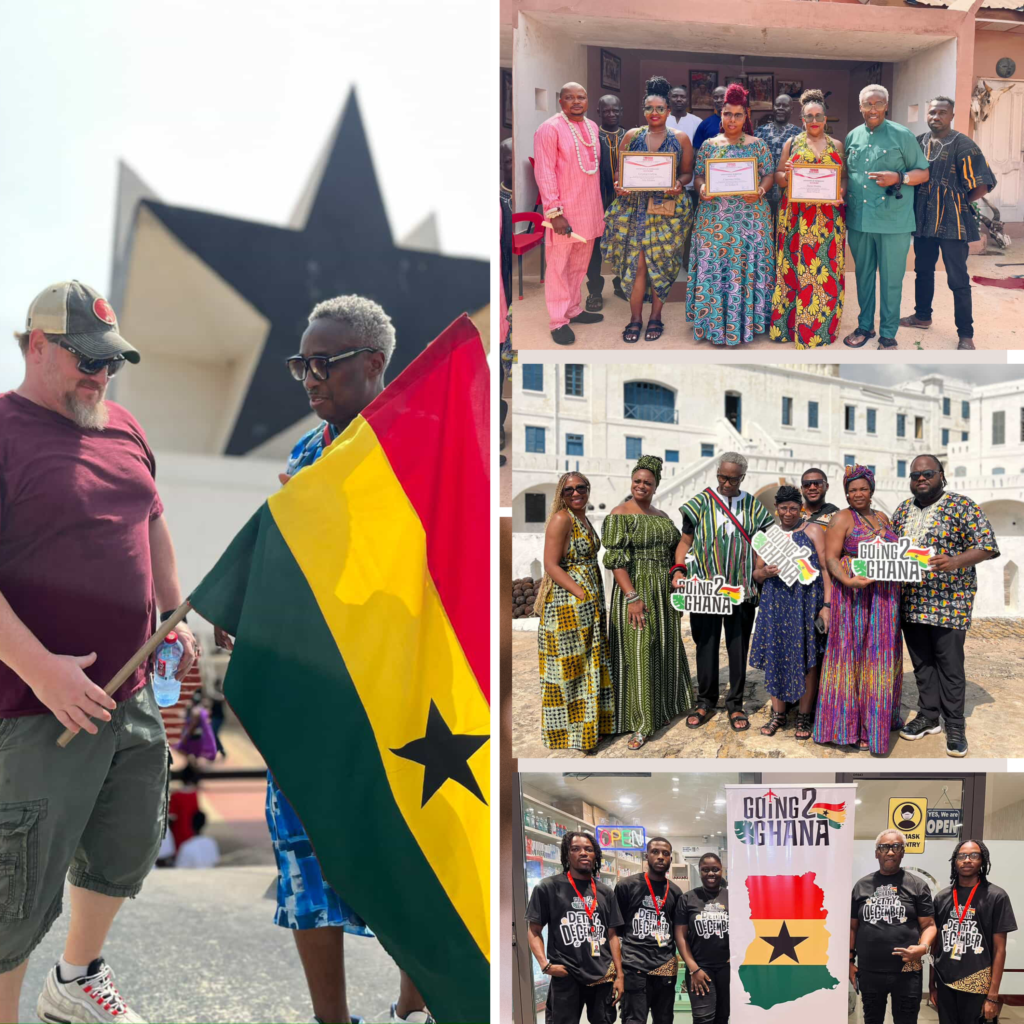
Signature Cultural Experiences That Change Lives
What sets Going2Ghana apart is its commitment to giving travelers real cultural access. Guests are invited to take part in once in a lifetime moments such as traditional African naming ceremonies, authentic brunch experiences, guided city tours, and deep cultural immersion that allows them to truly understand Ghanaian life beyond the surface.
Whether exploring Accra City, walking through historical river sites, or sharing meals rooted in tradition, every journey is designed to foster respect, understanding, and global connection.
Mother’s Day in the Motherland and Detty December Experiences
Going2Ghana continues to expand its cultural tourism offerings with landmark annual events.
Mother’s Day in the Motherland, launching May 8, 2025, is a week long cultural celebration honoring mothers through heritage exploration, luxury accommodations, and immersive Ghanaian experiences. Guests stay at the five star Pelican Hotel in Accra, enjoy daily buffet breakfasts, guided excursions, spa experiences, and a special Mother’s Day brunch showcasing Ghanaian hospitality.
Detty December, running from December 27 to January 3, allows global travelers to experience Ghana’s famous holiday season and usher in the New Year through its premier cultural celebrations. Visitors enjoy luxury stays and exclusive cultural encounters while experiencing one of the most vibrant times of year in the country.
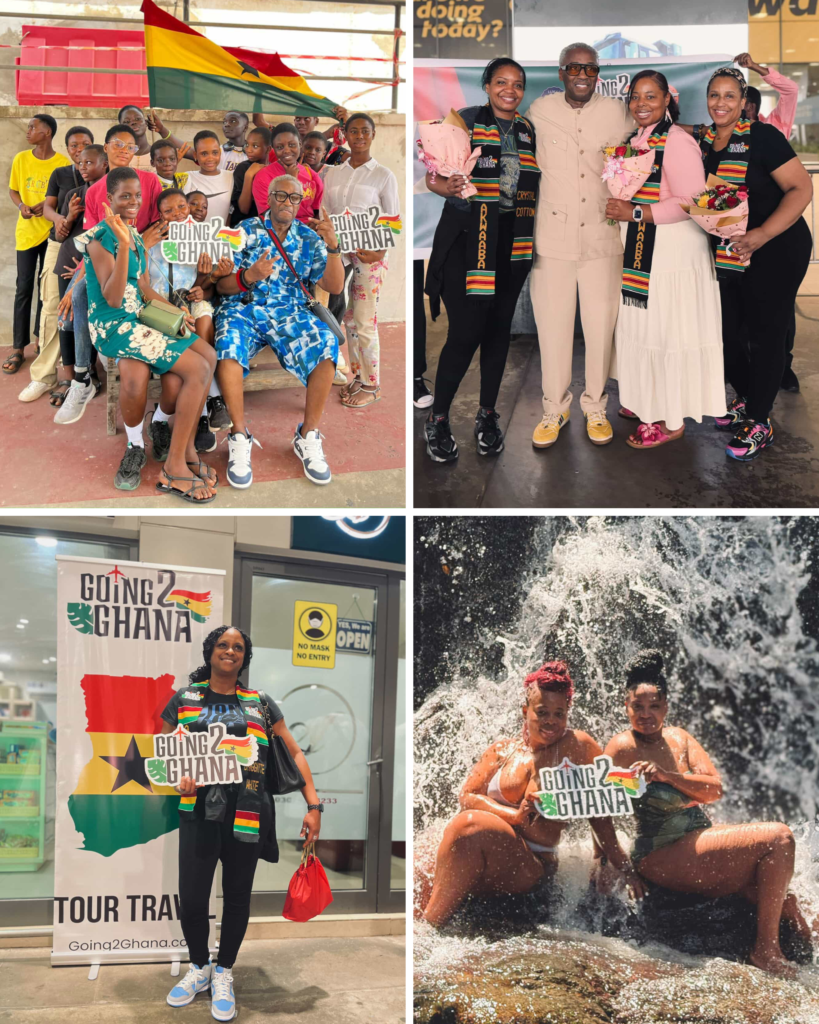
National Recognition and International Impact
The impact of Dave Bishop and Going2Ghana has not gone unnoticed. The company is fully accredited by the Ghana Tourism Authority and has received official praise from the Diaspora Affairs Office of the President of Ghana, recognizing its role in improving public perception of Ghana and Africa worldwide.
In 2025, Going2Ghana was honored as the Best Ghanaian Tourism Company with a 2025 LUXlife Award, a major global recognition that affirms the quality, integrity, and influence of the company’s work in the travel and tourism industry.
More Than Tourism, A Cultural Movement
Through Going2Ghana, Dave Bishop is not just selling trips. He is creating pathways for global understanding, economic growth, and cultural respect. Every tour, every experience, and every traveler contributes to a larger movement that uplifts Ghana while reshaping how Africa is seen around the world.
His work proves that tourism, when done with purpose, can educate, empower, and unite people across continents.
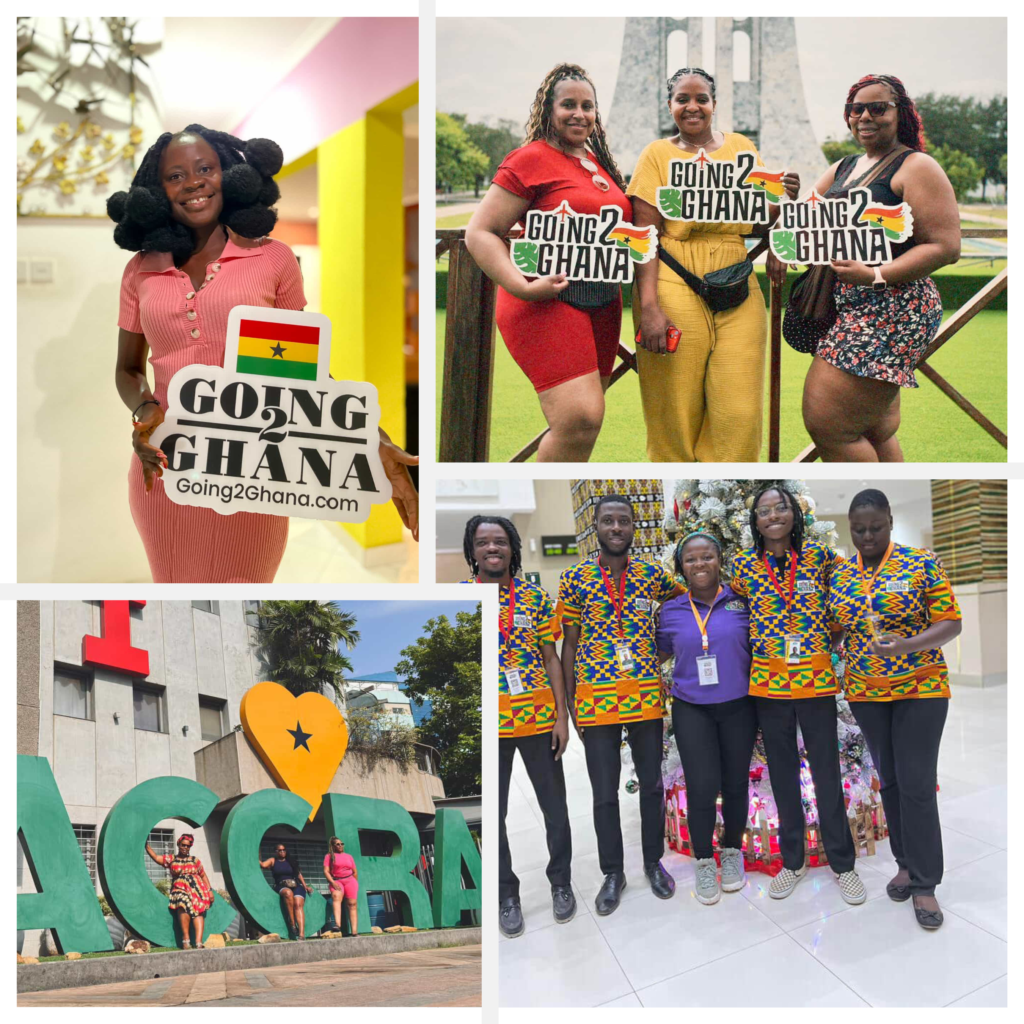
Entertainment
The Ladies of SRJR: Four Voices, One Powerful Sound
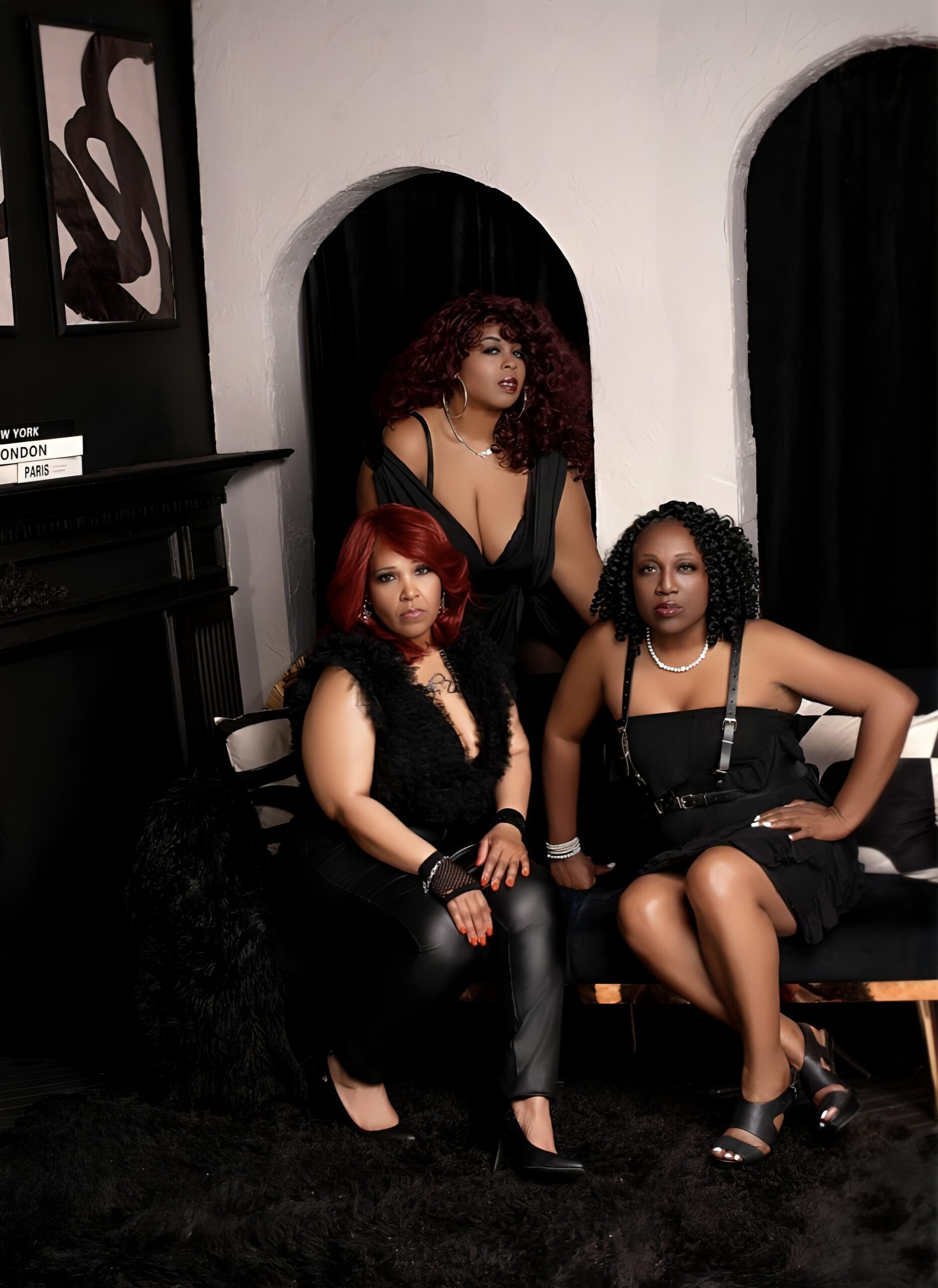
There’s a new wave rising out of Birmingham, and it isn’t following anyone’s blueprint. It’s being written, sung, shaped, and completely owned by The Ladies of SRJR Productions: Chay Crews (Chay Butta), Donna Ingram (Lady D), LaCindra McGowan (Sweet Lou), and the forever honored Andrea Carlisle (Drea’ C).
A singing group built on soul, strength, testimony, and truth, SRJR isn’t just harmonizing. They are healing communities, empowering women, and redefining what modern, women-led vocal artistry looks and feels like. They aren’t simply making music. They’re creating moments, building messages, and crafting a sound that comes from real life, real loss, and real love.
WHERE THEIR VOICES MEET, MAGIC HAPPENS
SRJR is not your typical girl group. They never intended to be. They are a blend of lived experiences, spiritual depth, Birmingham grit, and a bond of sisterhood so thick you can hear it before they even open their mouths.
Chay Butta brings the fire: sharp, fierce, and electric.
Lady D delivers the heart: warm, emotional, and grounding.
Sweet Lou carries the soul: deep, rich, and unforgettable.
And Drea’ C’s legacy is the air between every harmony they build: present, powerful, eternal.
Together, they create a sound that feels like truth. Warm, fearless, textured, and unapologetically theirs. A vocal chemistry that can’t be taught, only lived. Their connection is the kind that transforms a performance into an experience. One that leaves audiences feeling seen, soothed, and stirred.
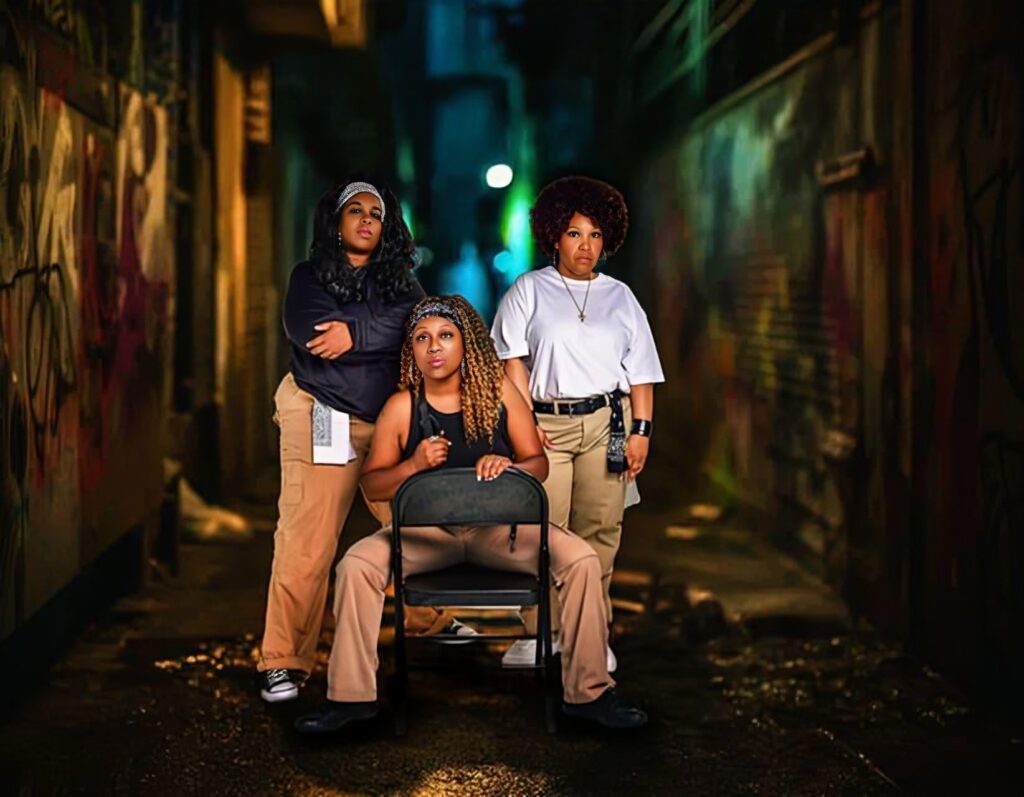
A VOCAL STYLE THAT HITS DIFFERENT
SRJR’s music moves with purpose, intention, and emotional weight. Their harmonies glide from smooth and silky to bold and commanding, layering warmth, grit, softness, and attitude all in the same breath. Their tone blends southern soul, gospel roots, R&B richness, and modern storytelling, creating a sound that feels handcrafted rather than manufactured.
Their performances resonate because they come from real stories: stories of family, adversity, community, womanhood, prayer, and resilience. Every note they sing has lived inside them long before it reaches the microphone. Every lyric reveals another piece of who they are and what they’ve overcome.
For SRJR, this is not just singing. It is testimony set to melody. Their music is a reminder that pain can be turned into power, and that harmony is created not just in voices but in shared journeys.
A GROUP THAT SINGS FOR THE PEOPLE
Ask SRJR what their mission is, and their answer always stands taller than the music.
“We want people to see themselves in the stories we create.”
Their songs uplift Black and brown communities, inspire young dreamers, and remind women everywhere that their voices are powerful and necessary. They sing to encourage, to comfort, to empower, and to remind people that they are not alone.
Their artistry is heartfelt. Their message is intentional. Their impact is lasting, long after the last note fades. They are the kind of group whose words linger in the mind and whose harmonies touch the spirit.
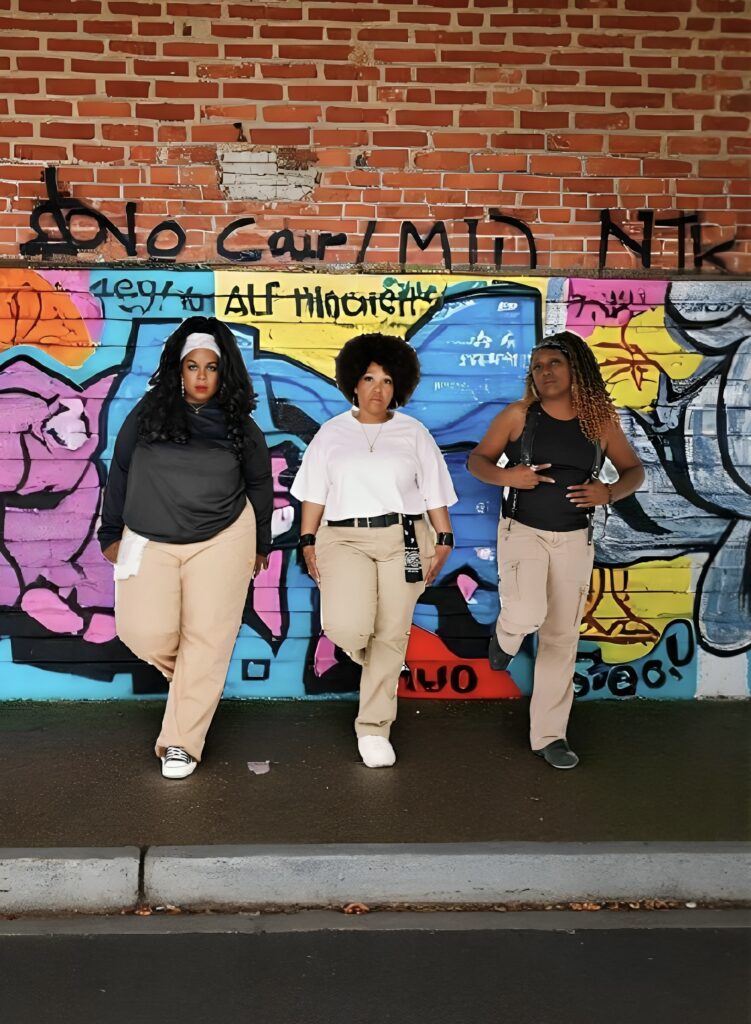
CARRYING LEGACY IN EVERY NOTE
Drea’ C may no longer be here physically, but her presence is woven into every rehearsal, every stage moment, and every vocal blend. Her energy guides them. Her influence shapes them. Her spirit lifts them.SRJR rises because of her, sings because of her, and honors her each time their voices unite. That devotion gives the group a depth and emotional weight you can feel even without knowing their full story a legacy that does not dim, only grows stronger with every performance.
THE NEXT CHORUS IS THEIR BIGGEST YET
With new music in the works, expanding audiences, and momentum that grows with every performance, The Ladies of SRJR Productions are stepping confidently into a spotlight they built with their own hands. They aren’t trying to fit into the industry’s mold. They are creating their own harmony: bold, soulful, authentic, and beautifully unified.
From Birmingham to every stage they touch, SRJR carries one message forward: Three voices rising. One legacy honored. Infinite impact. And their sound is only getting louder.
OFFICIAL PLATFORM
Their official YouTube channel, featuring music, performances, and creative releases:
https://youtube.com/@
Entertainment
Unpacking The Megamynd: A Cinematic Visionary Rising in Trap
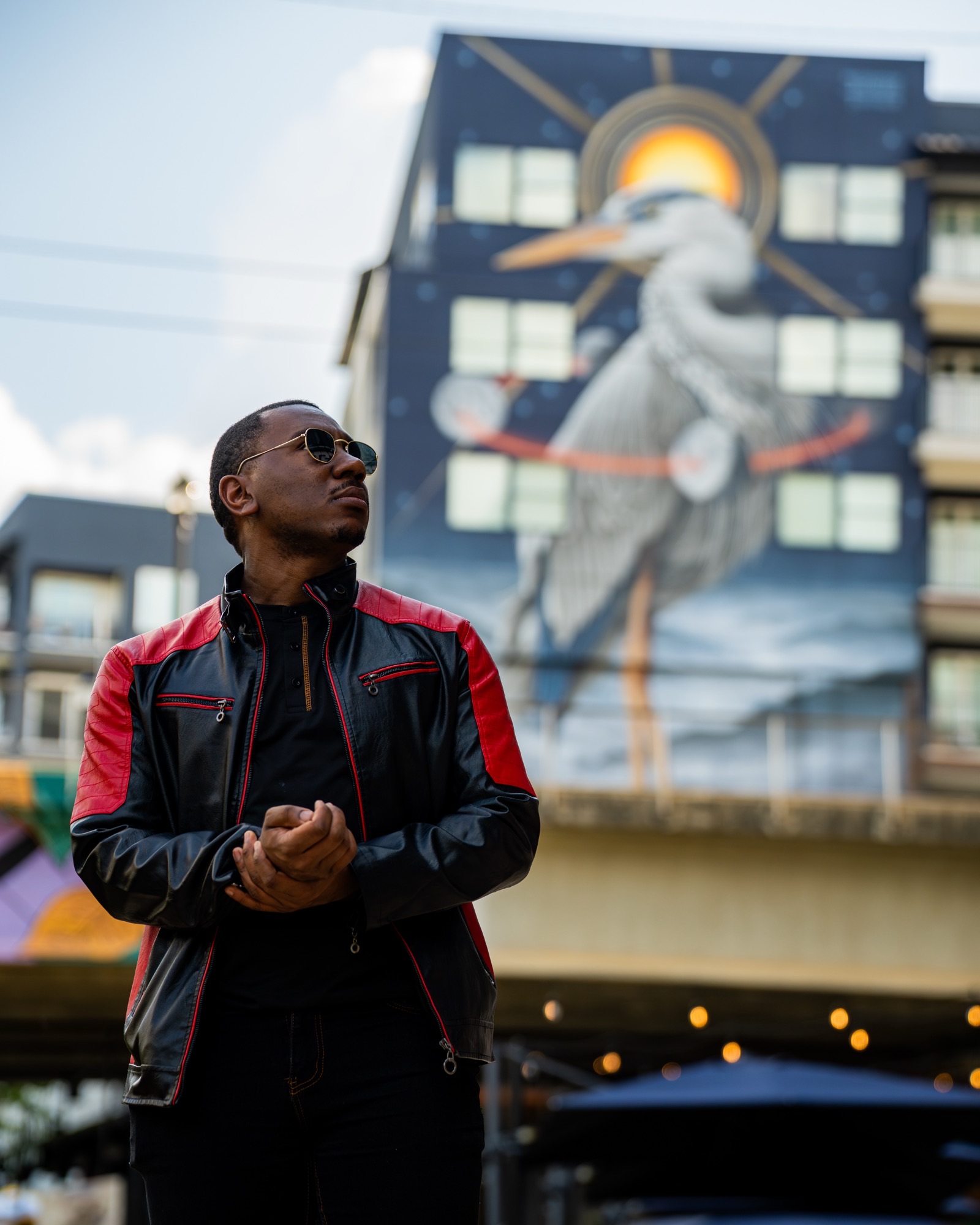
When you first land on The Megamynd’s website or listen to his debut single “Tonight,” what strikes you most is duality — the kind of contrast that feels carefully crafted, emotionally honest, and boldly ambitious. Born in Baltimore and now based in Atlanta, The Megamynd is carving out a lane in modern music that blends vulnerability and swagger, melancholy and energy.
The Megamynd fuses his Baltimore roots with an Atlanta upbringing, channeling those life experiences into a “genre-fluid” sound that’s emotionally raw and musically experimental. His stage name is no accident — it’s a nod to the DreamWorks character Megamind, whose journey from villain to hero mirrors the artist’s own story of transformation.
Signature Sound: Cinematic Rockstar Trap
If you had to label his music, “cinematic rockstar trap” comes closest. But even that feels too simple. His work weaves together:
Trap: hard-hitting beats and unpredictable flow.
R&B: soulful, sometimes melancholic melodies.
Futuristic synths: atmospheric textures that evoke movies or late-night thoughts.
This wasn’t pulled out of thin air: The Megamynd cites major influence from Playboi Carti, Yeat, and Ken Carson — artists known for pushing boundaries in trap and melodic rap.
Debut Single: “Tonight”
Released on November 7, 2025, “Tonight” is more than just a song — it’s an introduction into The Megamynd’s world. The track is cinematic in its construction: emotionally charged, filled with tension, and heavy with the uncertainty of a fleeting night.
In interviews, he describes the inspiration behind “Tonight” as capturing that seductive, in-between moment — the pull of attraction, the haze of a night out, and the question of whether what’s happening is real or just temporary. According to commentary, the production rides between smooth R&B and bold trap shifts, underscoring his talent for balancing vulnerability with bravado.
A Distinct Visual Identity
His artistry doesn’t stop at the music. The Megamynd’s visual identity is deeply considered: he blends rockstar aesthetics with business-casual streetwear, creating a look that’s polished and edgy at the same time. Recurring colors — blue, black, and gold — reinforce his brand as someone who is confident yet reflective, refined yet rebellious.
Personality & Passions
Beyond the stage, The Megamynd is multidimensional. On his site, he reveals personal interests that give fans a fuller sense of who he is: he’s into video games, anime, and — unexpectedly — lobster and steak. This mix of passions aligns with his creative vision: playful, thoughtful, and unafraid to defy expectations.
He also approaches his growth with a DIY mindset — determined to build his own path rather than follow a pre-made one. He’s focused on crafting meaningful music, engaging authentically with fans, and growing a brand that’s as emotionally resonant as it is stylistically bold.
Why He Matters
Genre Innovation: In a music landscape that often leans into formula, The Megamynd’s sound feels fresh, cinematic, and deeply personal.
Authentic Identity: He doesn’t hide behind persona; his name, visuals, and stories all connect in a meaningful way.
Emotional Storytelling: His music isn’t just about beats or flex — it’s about longing, introspection, and human connection.
What’s Next?
Right now, “Tonight” is just the beginning. According to his site, he’s laying the foundation for a larger catalog filled with emotionally driven, sonically experimental music. As he builds his presence, he’s also leaning into content creation, brand-building, and consistent engagement — all part of his plan to grow organically.
The Megamynd is an emerging artist who doesn’t just make music — he builds worlds. With his cinematic trap style, thoughtful visuals, and clear sense of identity, he’s someone to watch closely. If “Tonight” is any indication, his journey has only just begun.
Follow The Megamynd







